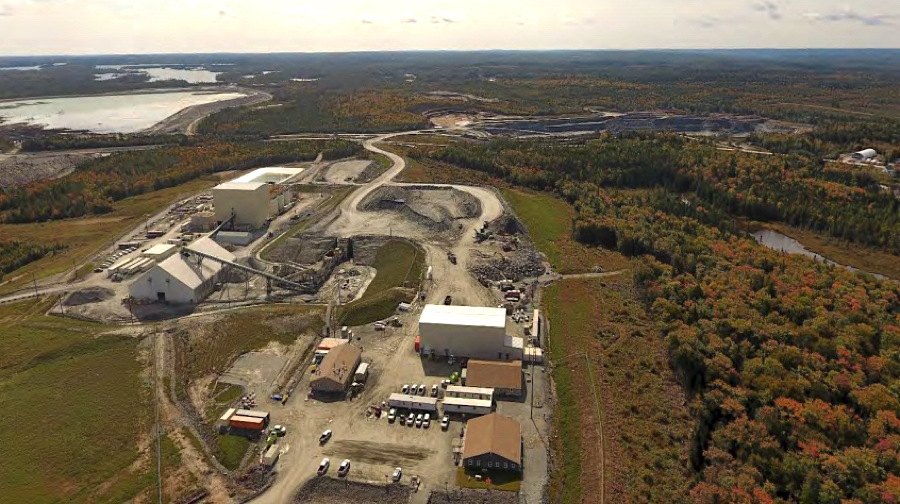St Barbara releases FY2023 guidance following approval of Touquoy tailings lift


St Barbara (ASX: SBM) has released its fiscal 2023 guidance after a positive update on its Touquoy gold mine in Nova Scotia, which ensured that the company's Atlantic operations will continue with certainty. The Australian miner's consolidated gold production is now expected to total between 280,000 and 315,000 oz. at an all-in sustaining cost (AISC) of US$2,050 to US$2,150/oz.
At its Atlantic operations, St Barbara plans to cease open pit mining at Touquoy at the end of the first half of fiscal 2023. In the second half the year, the plant will process stockpiled material, which would result in an elevated AISC forecast as the cost of building the stockpiles was incurred in prior years and accounted for on the balance sheet. From a cash flow perspective, the company expects the Atlantic operations to be positive, as the cash cost of moving stockpiles to the processing plant is significantly less than the current cost of open pit mining.
Meanwhile in Western Australia, the cost guidance at Leonora, consisting of the Gwalia underground mine and 1.4-million-t/y processing plant, has increased compared to the prior year due to rising energy, labour and consumables costs, coupled with a 23% increase in material mined. The company has previously flagged that grade from Gwalia will be lower for fiscal 2023 and 2024, before returning to reserve grade in 2025. The lower grade offsets the increase in mined material resulting in stable Leonora production for the 2023 guidance.
Located 235 km from Kalgoorlie, Gwalia is currently the deepest underground trucking mine in all of Australia and has been operating for more than 100 years. St Barbara took ownership of the mine in 2005. Since then, it has produced over 2.5 million oz. of gold.
In Papua New Guinea, the Simberi operation, which comprises an open pit that commenced operations in 2008, has returned to full production, resulting in higher production and lower AISC.
The FY 2023 guidance was enabled by the latest development on St Barbara's Atlantic operations. The company has previously requested to raise the height of the tailings dam at the Touquoy gold mine in order to extend operation until the end of fiscal 2023.
The Nova Scotia Department of Environment and Climate Change (NSECC) has now issued the final conditions for the industrial approval to allow for the tailings management facility lift. Construction is expected to commence in the coming weeks. At present, Touquoy is the only operating gold mine in the province.
Back in 2020, St Barbara began its permitting process to convert the Touquoy open pit into a tailings management facility upon completion of mining. The timeframe of this in-pit tailings solution has since been impacted, with the NSECC seeking further clarification on its potential impacts on the environment, delaying its construction work.
As an interim solution, St Barbara elected to make an application to raise the existing tailings dam while the in-pit deposition matter is settled. Currently, the tailings capacity at Touquoy is expected to be exhausted by mid-September 2022. Without timely approval of the tailings lift, the company could be forced to suspend operations at Touquoy and place the mine on care and maintenance.
The tailings facility lift should provide sufficient time for the company to work with the provincial government to resolve NSECC’s outstanding queries on the environmental assessment for in-pit tailings deposition, St Barbara said. Upon receipt of the in-pit tailings deposition permit, the Touquoy site will have sufficient tailings capacity to support the company's longer-term Atlantic province plan, which is also proposed to include the nearby Beaver Dam and Fifteen Mile Stream projects.
According to the company, there are sufficient stockpiles in place at Touquoy to ensure continued gold production from the Atlantic operations until December 2024. It is likely to achieve final permitting for Beaver Dam prior to that time.
For additional details, visit stbarbara.com.au.
Comments